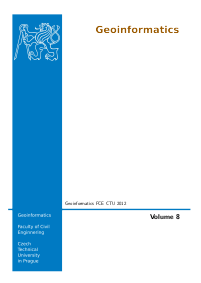Potential influence of e-learning and Open Source solutions for education at Palacký University in Olomouc inspired by Polytechnic University in Valencia
DOI:
https://doi.org/10.14311/gi.8.6Keywords:
E-learning, gvSIGAbstract
This paper assesses different approaches in education between Western and Eastern Europe. It is based on a case study, comparing which compares universityies conventions inbetween Spain and Czech Republic, focusinged on e-learning and Open Source softwareources. The Eeducation system at Polytechnic University in Valencia (UPV) puts much more emphasis on open source solutions and elearning compared to the situation in Czech Republic. gvSIG is an open source geographic information system (GIS), co-developed at UPV as ain collaboration of commercial companies with research institutions. Lecturers at UPV significantly integrate free and open source (FOSS) into classes as well as they participate in open source communities like Planet gvSIG, gvSIG Outreach or Association for the promotion of FOSS4G and the development of gvSIG. In fact, a complex system for self-education in the field of GIS has been developed there. It combines positive relationship to open source solutions and takes advantage from all sections together. The “Aula Virtual” project is a virtual training classroom using the virtual educational platform. Great emphasis is put on step-by-step video tutorials. 300 videos are uploaded on PoliTube Channel, which contain both video and audio and “time-stamps-links”. Time-stamp allows the possibility to switch among videos and other sources (annotation, webpages, etc.) dependent on the student’s individual requirements. Compared to the situation in the Czech Republic, where proprietary software is still preferred in the academic sphere, this topic brings place for discussion. This paper discusses two different points of views, benefits of both of them and proposes a solution with regard to the specifics of Czech university education.References
ANGUIX A. (2011): 7th International gvSIG conference. Valencia, 92 p.
CROPPER, S. (2010): The use of gvSIG as the primary geographic information system for the analysis of spatial data and the production of maps in a small ecological consulting firm. In: Open Planet, Vol. 4, pp. 20-29.
CHEN, D. et al. (2010): Assessment of open source GIS software for water resources management in developing countries. In: Journal of Hydro-environment Research, Vol.4, pp 253-264.
POVEDA M. A. B., GONZALES, M. A. (2010): Proyecto: Aula Virtual gvSIG. Madrid, 8 p.
SILLERO N., TARROSO P. (2010): Free GIS for herpetologists: free data sources on Internet and comparison analysis of proprietary and free/open source software. In: Acta Herpetologica, Vol. 5, pp 63-85.
TSOU M., SMITH J. (2011): Free and Open Source Software for GIS education. San Diego, 18 p.
URBANO, F. et. al. (2010): Wildlife tracking data management: a new vision. In: Philosophical transaction of the Royal Society, Vol. 365, pp 2177-2185.
VÁZQUEZ, J.P., PLATERO, M.M.N. (2011): ¿Cúal es la mejor forma de aprender gvSIG? In: 7th International gvSIG conference, Valencia, 40p.
Courses - bachelor study Geoinformatics. Online [http://geoinformatics.upol.cz/ epredmety.php]
EdugvSIG. Online [http://edugvsig.blogspot.com/].
gvSIG Desktop. Online [http://www.gvsig.com/products/gvsig-desktop].
gvSIG Mobile. Online [http://www.gvsig.com/products/gvsig-mobile?set_ language=en].
IDEE. Online [http://www.idee.es/showNewsList.do?cid=pideep_noticias].
Downloads
Published
Issue
Section
License
- Authors retain copyright and grant the journal right of first publication with the work simultaneously licensed under a Creative Commons Attribution License that allows others to share the work with an acknowledgement of the work's authorship and initial publication in this journal.
- Authors are able to enter into separate, additional contractual arrangements for the non-exclusive distribution of the journal's published version of the work (e.g., post it to an institutional repository or publish it in a book), with an acknowledgement of its initial publication in this journal.
- Authors are permitted and encouraged to post their work online (e.g., in institutional repositories or on their website) prior to and during the submission process, as it can lead to productive exchanges, as well as earlier and greater citation of published work (See The Effect of Open Access).

